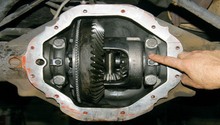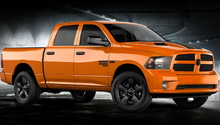Dodge Ram 2009-Present: Gear Ratio Information
Gear ratios are tricky to understand, so let's talk about some basics and see if we can sort some things out. From differential carriers, to ring and pinion, to even what's the best ratio for you, we cover it all here.
This article applies to the Dodge Ram (2009-Present).
So, before we dive into what gear ratio is better for you, let's first go over what gear ratios are and their related components.
Rings and Pinion Gears and Ratios
When we are talking about gear ratios, we are talking about the ratio of turns that the driven wheels make in relation to your drive shaft. So to be specific, we are talking about final drive ratio. Your transmission also has gear ratios for each of its gears, but that is another topic for another time. So as the power is sent out of the transmission, it travels to the rear end by means of the drive shaft. Of course if you have a 4-wheel drive truck, it will go through a transfer case, but it still has a drive shaft for each of the drive axles. These drive axles are connected to the rear end via U-Joints. These U-Joints at the rear end sit in what is called a yoke. The yoke is a metal piece that is shaped like a "U." If you have heard anybody talk about gear ratios before, you might have heard the term ring and pinion. That yoke is connected to the pinion gear through splines and a nut. That pinion gear meshes with the ring gear. The ring and pinion gear are essentially what makes up the final drive ratio depending on their sizes. When we are talking about these ratios in numbers, we commonly will say 3.92:1 or simply just 3.92. What we mean by this is that for every 3.92 turns of the drive shaft, or pinion gear, the wheels will turn one time.
Common axle ratios that came from the factory on Dodge Ram trucks are 3.21, 3.55, 3.92, and 4.10.
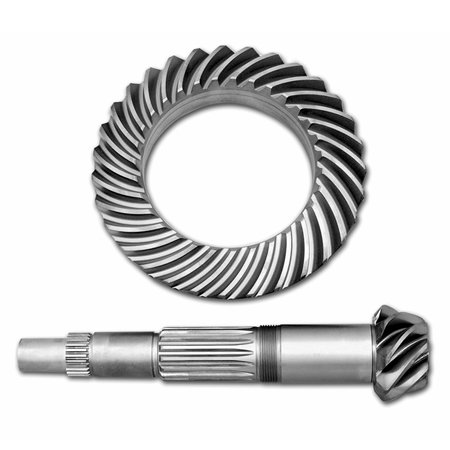
Differential Carriers
The ring gear is attached to the differential carrier, which is housed in the rear end housing. The differential carrier is what the axles are splined into, and is what transmits the power from the pinion gear to the ring gear, which is attached to the differential carrier and finally to the axles as well as wheels.
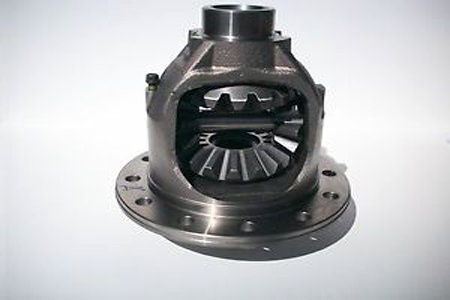
The differential is needed to allow the wheels to spin at different speeds when going around corners. When we refer to differentials we usually refer to them in three basic types.
- Open Differentials: This means there is no traction aid added to the differential, such as an LSD (Limited Slip Differential) or Locker. This also means that in the case of a loss of traction, the power will go to the wheel that is the least stuck, taking traction away from the wheel that needs it the most.
- LSD (Limited Slip Differential): This means that the differential has a traction-helping device that in the event of a loss of traction will allow it to "Limit" slip to the wheels and allow power to be distributed evenly. This is not fool proof though. This still allows the differential to act as open when needed.
- Locking Differential: This means that the differential has a traction locking device that allows you to lock the axles together to ensure maximum traction at a given time. This device usually takes away the differentials ability to vary the power distributed to the wheels and makes it so that the power applied to the axles is the same at all times.
In regards to Dodge Ram trucks of these years, they either came with open differentials or with LSD an option on certain gear ratios.
Identifying What You Have
There are a few ways you can go about identifying what you have. The first and easiest way is to look at your window sticker if you still have it. It is possible that it will have the gear ratio listed, and if it has a limited slip differential or not. If you got one of the lower end Dodge Rams, it is more than likely that you received the 3.21 gear ratio. After doing some research, it seems that the majority of these year Dodge Rams came with that axle ratio. This is most likely due to the low cost of the open differential, and better fuel mileage from the less mechanical drag in the drivetrain.
Another way to tell what gear ratio you have is to contact your local dealer and provide them with the VIN. They can print you a build sheet that will be able to show you what gear ratio you have.
If none of these are possible, there is always the possibility that you can find the information printed on a sticker somewhere on your truck. A few common places where these stickers are located:
- Glove box sticker
- Tag on rear axle differential cover
- Passenger's side rear axle housing
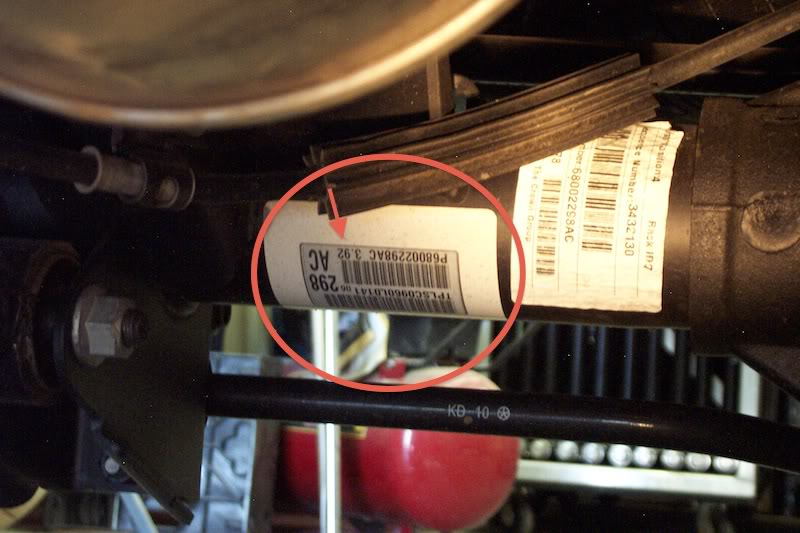
Which Gear Ratio is Best For You?
This is a tricky question. Like many parts on your truck, gear ratios can be swapped out and changed to better suit your application. Only you can determine what gear ratio is best for you. Essentially, the higher the number of ratio, the faster the wheels are going to spin at any given RPM. What this means is that a 4.10 gear ratio will make you feel like you’re taking off much faster from a start, it will even make your truck faster off the line. But because of this, when you are on the freeway your wheels are also going to be spinning faster, which in turn will make your RPMs higher and (as you can imagine) will make you gas mileage suffer.
We could seriously discuss the pros and cons all day, but I think it must come down to what you need your gear ratios for. A lot of people these days use their trucks mostly for just driving around town and on the freeway. For that kind of driving, the lower gear ratios like the 3.21 and 3.55 are going to work the best. If you tow a lot or are looking to put a lot of power to the ground at all times, then the higher gear ratios like the 3.92 and 4.10 are going to work better for you. Also, keep in mind that changing out gear ratios is not cheap. It usually costs around an average of $1,000 an axle to change out gear ratios. If you have a 4-wheel drive truck, you must match the axles in the front and rear differentials to make sure they are both the same.
This is literally just scratching the surface when it comes to gear ratios. The best thing to do—if you are still confused about what gear ratio is best for you—is to contact someone who knows a good amount about the topic.
Related Discussions
- Gear Swap - DodgeForum.com
- Gear Ratio Question - DodgeForum.com

